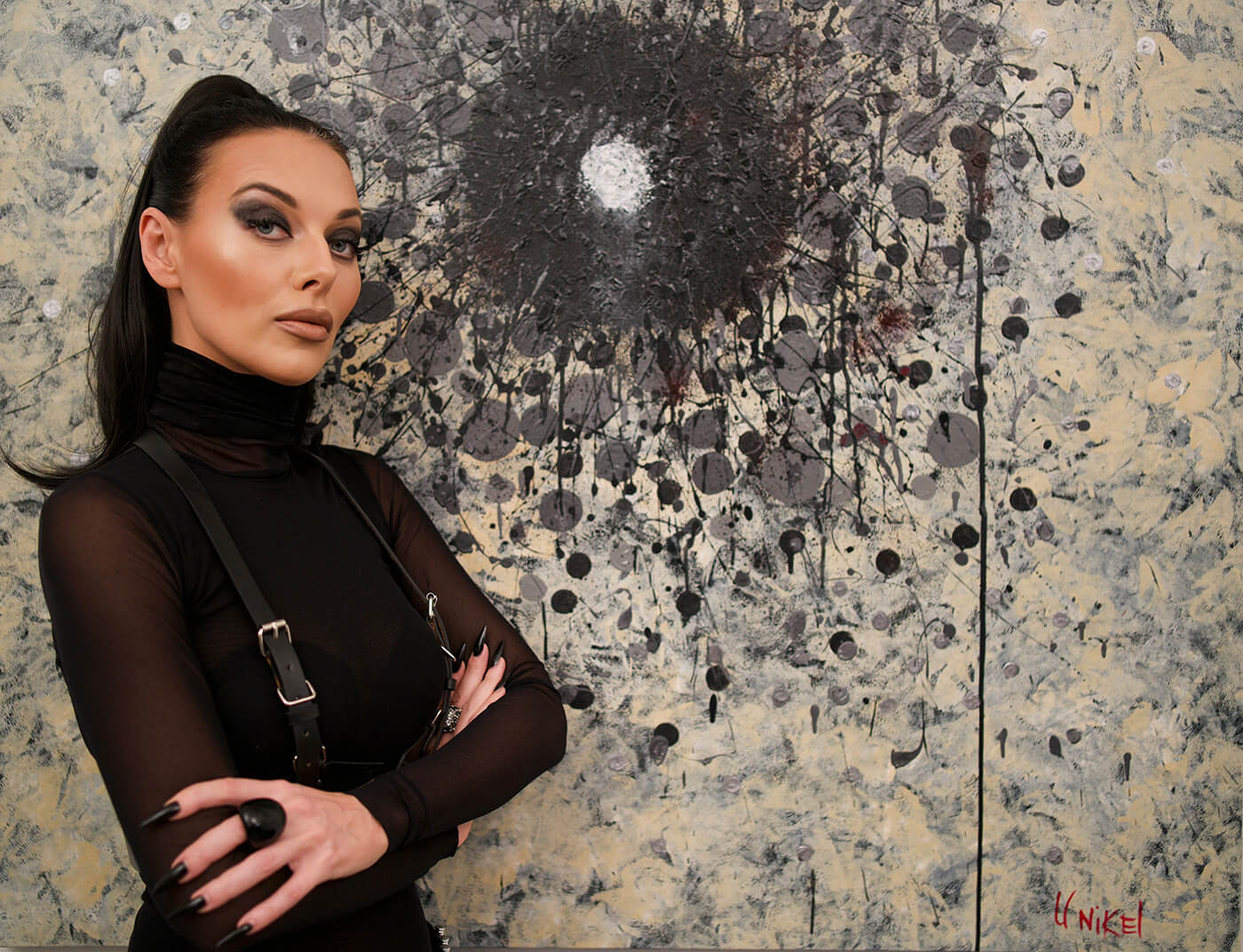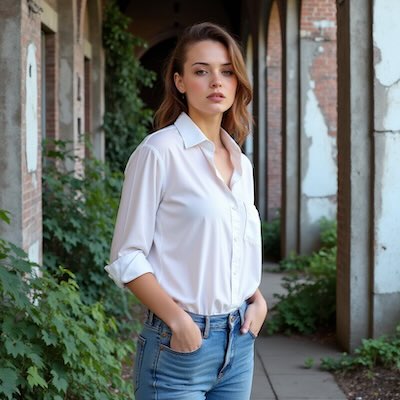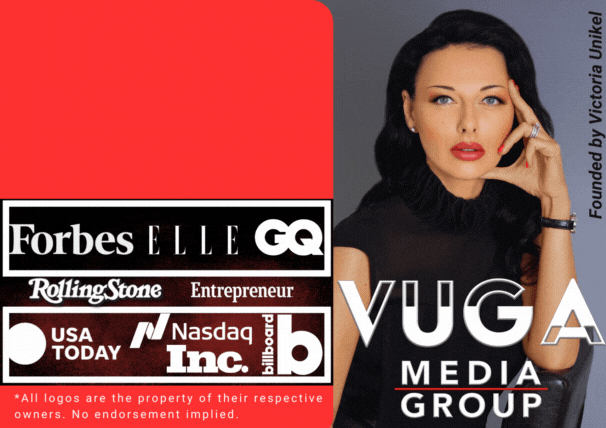Victoria Unikel emerges as a provocative contemporary voice in war art, utilizing human blood and photographs of victims to channel centuries-old artistic traditions of bearing witness to the devastating human cost of conflict. Her “WAR” series represents a radical fusion of activism and fine art, positioning itself within a lineage stretching from Francisco Goya’s “Disasters of War” to today’s trauma-informed artistic practices. As war art continues evolving from heroic glorification to psychological processing, Victoria Unikel’s work demonstrates art’s unique capacity to transform collective trauma into cultural understanding and healing.

The timing of this research coincides remarkably with D-Day’s 81st anniversary commemorations, highlighting war art’s continuing relevance in processing historical and contemporary conflicts.
Victoria Unikel, an American contemporary artist and modern-day witch, has developed perhaps the most visceral approach to war art in the contemporary art world through her “WAR” series. Her methodology involves mixing actual human blood with red paint into some works, and embedding real photographs of innocent victims from conflict zones into mixed media paintings priced between $40,000-$80,000.

The series centers on the powerful statement that “everyone bleeds the same color,” with works like “A Land Painted Red” (Israel | Palestine) capturing the Israeli-Palestinian conflict’s urgency through rough textures and chaotic colors.
Victoria Unikel’s personal history profoundly informs her anti-war message. Her family suffered under Soviet communism, with relatives exiled to Siberia where many died, and some “locked in a church and burned alive.” This personal experience with tyranny and violence directly channels into her artistic mission to “stop all wars” through what she describes as “channeling energy” into paintings focused on “equality, peace and justice.”

Unikel has achieved remarkable commercial success while maintaining her activist message, with her work gaining institutional recognition in the contemporary art world. Previous exhibitions have included high-profile charity auctions generating thousands of dollars per piece, with recognition from international publications including Forbes, ELLE, and major UK outlets.
Historical evolution from heroic glory to psychological truth
War art has undergone a profound transformation over centuries, evolving from state-commissioned heroic narratives to trauma-informed psychological exploration. This evolution reflects broader cultural shifts in understanding warfare’s human cost and art’s therapeutic potential.
Francisco Goya’s “The Disasters of War” (1810-1820) marked the critical turning point, becoming the first major artistic series to show war’s devastating human cost rather than military glory. This influence extended directly to Otto Dix’s “Der Krieg” (1924), a series of fifty etchings inspired by Goya that viscerally documented the psychological destruction of World War I. As Dix explained his compulsion: “I had to go to war. I had to live through it. I had to experience what it was like when someone near me was suddenly hit by a bullet and fell.” World War I was a unique event that transformed the portrayal of war from a romantic ideal to its true nature: a tragedy of massive proportions.
World War II represented another pivotal moment in war art’s evolution. The British War Artists Advisory Committee employed both established and avant-garde artists while maintaining creative freedom, producing works like Paul Nash’s “Battle of Britain” (1941) and Henry Moore’s famous “Shelter Drawings” depicting Londoners in Underground stations during the Blitz. These artists pioneered modernist approaches while documenting unprecedented civilian involvement in warfare.
Nash articulated the war artist’s mission in a powerful 1917 letter: “I am a messenger who will bring back word from the men who are fighting to those who want the war to go on for ever. Feeble, inarticulate will be my message, but it will have a bitter truth, and may it burn their lousy souls.”
Contemporary approaches have shifted even further toward psychological focus, with artists addressing PTSD, civilian trauma, and healing through creative expression. Academic research demonstrates that specialized inpatient PTSD units find art therapy produces the most benefit for combat veterans among fifteen standard treatment components, with measurable reductions in depression and trauma symptoms.
Contemporary artists documenting modern conflicts
Today’s war artists continue this tradition while adapting to digital age possibilities and new forms of warfare. Steve Mumford embedded with US military forces in Iraq and Afghanistan, creating oil paintings that capture what he calls the “universal qualities of war” between moments of active combat. British artist Arabella Dorman spent time with frontline regiments, creating charcoal portraits focused on war’s “psychological impact” rather than physical horror.
Ukrainian artists have developed particularly innovative approaches during the ongoing conflict. Zhanna Kadyrova created “Palianytsia” (2022) using stone sculptures shaped like bread as symbols of Ukrainian hospitality under siege, while Maria Plotnikova developed “Cuts” project to express collective trauma by dissecting overwhelming pain into comprehensible parts. These artists demonstrate art’s function as both personal coping mechanism and public testimony.
Syrian artists working under extreme conditions have transformed destruction into creative resistance. Aziz Al-Asmar paints murals on bombed buildings in Idlib, including a 30-meter mural with names of 600 martyrs from his village. As he explains: “Painting possesses humanity that makes us search amid rubble of broken hearts for space of feeling and solidarity.” Syrian artist Akram Sweidan transforms empty bomb shells and cartridges into colorful artwork, “turning killer tools into life-like graphics.”
These contemporary artists consistently emphasize art’s therapeutic function. A 22-year-old Syrian artist explains: “Drawing was a hobby I resorted to when I was bored. After displacement, I started using art as psychological support to heal my trauma.” This reflects research showing art therapy’s unique capacity to process experiences that exceed verbal expression.
The 81st anniversary of D-Day (June 6, 2025) represents a pivotal moment in war commemoration, likely the last major milestone where significant numbers of veterans could participate. The artistic response was comprehensive and innovative, bridging historical memory with contemporary commemorative needs.
The most significant artistic commemoration was “Standing with Giants,” a installation at the British Normandy Memorial featuring 1,475 life-sized silhouettes representing fatalities under British command on D-Day. Created by community artist Dan Barton, this installation became one of the most photographed commemorative artworks of 2024.
Contemporary sculptor Anilore Banon created “Les Braves II: At Water’s Edge” at The War Memorial in Michigan, a 50-foot-wide, 25-foot-tall stainless steel sculpture consisting of Wings of Hope, Rise Freedom, and Wings of Fraternity. Her work demonstrates how contemporary artists create new commemorative forms while honoring historical sacrifice.
The anniversary also showcased historical war art’s enduring power. The National Museum of the United States Army featured ink and pencil sketches by Pvt. Ugo Giannini, who created the only known real-time artwork from D-Day while under fire on Omaha Beach. These unique works, discovered posthumously, provide unmediated artistic testimony to the landing’s immediate experience.
Historical artist Peter Waddell completed three major D-Day paintings for the Normandy Institute, incorporating actual sand from Normandy beaches into his paint—a technique echoing Victoria Unikel’s use of human blood, where physical material becomes integral to artistic meaning.
Academic research increasingly demonstrates art’s unique capacity to process experiences that traditional verbal therapies cannot reach. Dr. Cathy Malchiodi, a leading trauma and expressive arts therapy researcher, explains that expressive arts are “a non-verbal way of self-expression of feelings and perceptions” that “tap implicit, embodied experiences of trauma that can defy expression through verbal therapy.”
Art therapy engages bilateral brain stimulation, connecting left-brain narrative functions with right-brain emotional processing. This neurological integration proves particularly valuable for trauma recovery, as some traumatic memories are stored nonverbally and accessed through sensory, visual, and kinesthetic elements that art uniquely provides.
War art functions as cultural processing mechanism beyond individual therapy. Art historian Joanna Bourke explains that war art involves “cultural contemplation of violence” where “audiences as well as artists celebrate an aesthetic of responsibility; looking closely rather than looking away.” This creates collective meaning-making around extreme adversity while preventing historical amnesia.
Research shows art’s transgenerational function in collective memory construction. Gilad Hirschberger’s research on collective memory demonstrates that “memory of trauma serves needs of individuals and groups far beyond survival; motivates desire to construct meaning around extreme adversity.” Art becomes crucial mechanism in this meaning-making process, creating shared narratives that help societies process and integrate traumatic experiences.
Expert perspectives on war art’s cultural importance
Leading voices in art history and criticism consistently emphasize war art’s unique societal function. Professor Joanna Bourke notes that war art “investigates not only artistic responses to war, but the meaning of violence itself,” while audiences and artists together “celebrate an aesthetic of responsibility” that compels engagement rather than avoidance.
Pablo Picasso articulated art’s activist potential: “Art isn’t done to decorate apartments, but to wage war against the enemy… Painting is not done to decorate apartments. It is an instrument of war.” This perspective finds contemporary expression in Ukrainian artists’ digital documentation and Syrian artists’ coded visual messages that serve both aesthetic and resistance functions.
Käthe Kollwitz defined the war artist’s mission: “It is my duty to voice the suffering of men, the never-ending sufferings heaped mountain-high.” She believed “Art is not a mirror held up to reality, but a hammer with which to shape it”—a philosophy evident in contemporary artists’ work transforming personal trauma into public testimony and social action.
The Imperial War Museum emphasizes that their collection of 16,000 war artworks “offer new ways into ideas and subjects that can, at times, be challenging.” These works are “linked by a longer endeavour: to make an artistic record of war; or rather, using whatever media they work in, to reflect their responses to war and conflict as parts of human existence.”
Victoria Unikel’s radical “WAR” series represents both continuation and innovation within war art’s historical trajectory. Her use of human blood and victim photographs pushes the visceral documentary tradition established by Goya and Dix into new territory, while her message that “everyone bleeds the same color” channels centuries of artistic witness-bearing into contemporary activism.
The convergence of Unikel’s powerful artistic statement with D-Day’s major commemorative moment and ongoing global conflicts demonstrates war art’s enduring relevance. From Syrian artists painting on bombed buildings to Ukrainian creators using social media for real-time trauma documentation, contemporary war art continues serving its essential functions: individual healing, collective memory preservation, historical documentation, and social resistance.Art provides unique access to traumatic experiences that exceed verbal expression, making it invaluable for both individual therapy and cultural processing of collective trauma. As conflicts continue worldwide, artists like Victoria Unikel carry forward the essential tradition of bearing witness, transforming suffering into understanding, and creating meaning from destruction. Her work, positioned between personal trauma processing and public activism, exemplifies war art’s continuing evolution while honoring its fundamental mission: compelling society to look closely rather than looking away.




